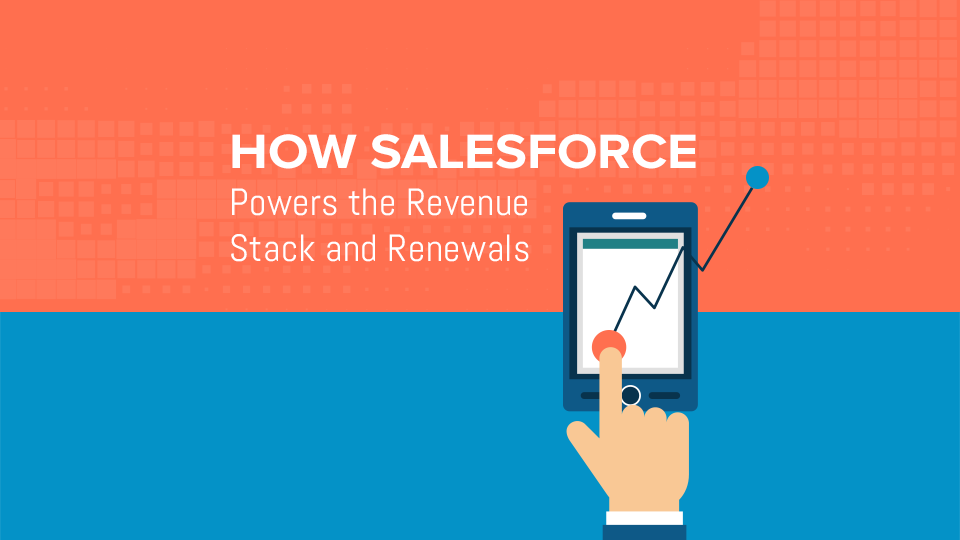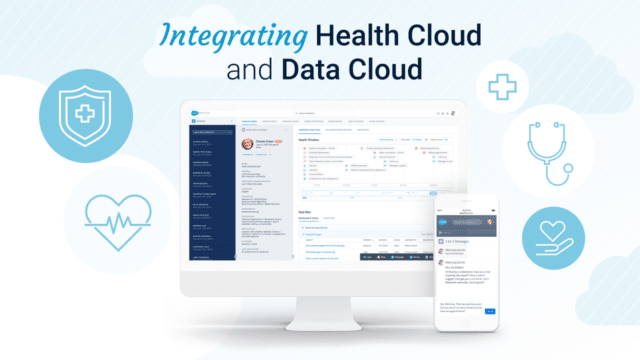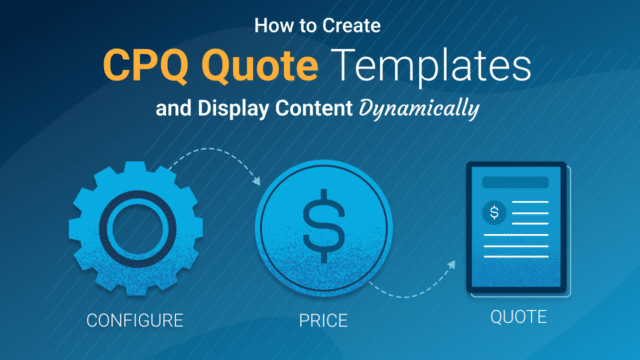Editor’s Note: For more on the Revenue Stack, be sure to check out our preceding post, The Revenue Stack & the rise of the Chief Revenue Officer.
Salesforce is the backbone of the Revenue Stack and should be the single source of truth for every B2B SaaS organization. In this post, we explore how Salesforce powers your Revenue Stack and how the Revenue Stack drives renewals.
Salesforce is the Foundation of the Revenue Stack
Salesforce is the foundation of the Revenue Stack for several reasons. First, Salesforce is the heart of any good enterprise Sales team because it drives sales, upsells, and enables renewals. Second, Marketing’s activities should generate leads for the CRM and then nurture those leads until they’re ready for Sales to work. After that, Marketing should continue the heavy lifting of sales enablement throughout the entire sales cycle based on what is happening in the CRM. It’s intuitive that Salesforce is the foundation for any Revenue Stack because so much of Sales and Marketing is facilitated by the CRM.
Additionally, Salesforce has the largest B2B app ecosystem in the world. Almost every major marketing tool integrates with Salesforce. There are other platforms central to Sales and Marketing performance (Google Analytics is a good example) but Salesforce enables integration like no other.
How Renewals Impact Revenue
For a traditional B2B SaaS company, customer acquisition costs could take 12 to 16 months to pay off. Meaning, if the customer doesn’t renew for the second year, you’ve lost money.
Companies have no problem investing money to close a sale, but sometimes hesitate to invest in securing renewals at higher annual amounts. This doesn’t make sense.
The end game for B2B SaaS companies isn’t just the renewal. Your organization doesn’t want $250,000 deals renewed for $250,000. It wants $250,000 to renew for $350,000.
To begrudge investing in customer success and support, but still be happy spending on sales is naive. Every customer your company doesn’t keep and nurture into year two of a renewal is a lost investment. Yes, there’s a balance between investing in new business and decreasing churn, however, customer success and support are far more important to revenue and a SaaS company’s long-term success than the initial sale.
How the Revenue Stack Powers Renewals
There are several Salesforce APIs that allow organizations to pass data into Salesforce from their own B2B SaaS product. Once your team integrates your SaaS backend with your instance of Salesforce, your customer-facing teams can easily view data like login frequency, features customers use, and how many credits they consume. This enables a proactive customer success strategy based on client data in the platform your teams already use every day.
Every customer your company doesn’t keep and nurture into year two of a renewal is a lost investment.
Let’s look at two examples of how a Revenue Stack can be used to automate Customer Success to decrease churn and improve LTV.
Example One: Infrequent Logins
Once a Salesforce instance is integrated with your SaaS platform, Sales, Support, and Customer Success can query and use data based on customer actions. This means having the ability to trigger a workflow for a Customer Success manager based on how often a client logs in. Passing last login data to Salesforce via an API is straightforward: if a client hasn’t logged in to a certain feature within a designated timeframe, you can send the client emails with tutorial videos. Or, Salesforce can send a notification to their Customer Success manager if a client has a low number of logins and is at risk to churn.
Example Two: Frequent Logins
On the other hand, if a user logs in frequently, this indicates they’re obtaining high value from your product. The same API foundation between your product and Salesforce means being able to notify Sales to begin planning for an upsell or cross-sell opportunity.
Wrap Up
If you have any questions about Revenue Stack Management or how organizations are using Salesforce for upselling and renewals, get in touch.



